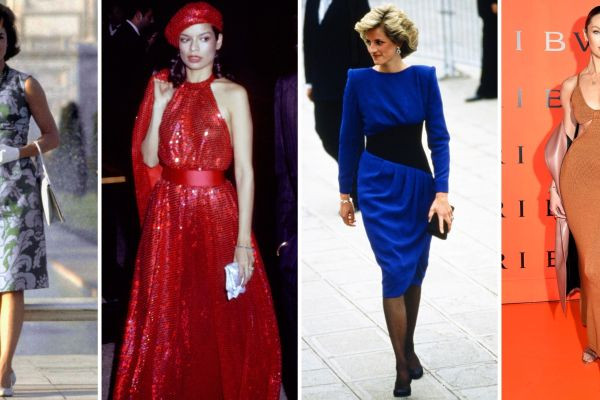Introduction
Fashion has always been a reflection of society's values, attitudes, and cultural shifts. Throughout history, the world of fashion has experienced significant transformations, and the 19th century marked a pivotal period in the evolution of style. Fast forward to the present day, fashion has undergone numerous revolutions, driven by technological advancements, globalization, and changing societal norms. In this article, we will explore the key differences between 19th-century fashion and the current fashion trends.
Fashion History: An Ever-Changing Canvas
Fashion history is a dynamic tapestry, woven with threads of innovation and inspiration. Designers throughout the ages have drawn from art, politics, technology, and cultural movements to craft unique and influential styles. By understanding fashion's history, we gain insight into how trends emerge and evolve, shaping our present-day choice
Silhouette and Structure19th Century
The 19th century was characterized by elaborate and structured garments. Women's fashion in the early 1800s saw high-waisted empire dresses with voluminous skirts, emphasizing a slim waistline. As the century progressed, Victorian fashion introduced corsets and crinolines, creating exaggerated hourglass figures. Men's fashion featured tailored suits with fitted jackets and trousers, often accompanied by top hats and walking sticks.
Current Fashion
In contrast to the rigid structures of the 19th century, today's fashion celebrates fluidity and diversity in silhouettes. Gender-neutral and oversized clothing has gained popularity, rejecting traditional gender norms. Loose-fitting dresses, athleisure wear, and casual styling are prevalent in contemporary fashion, reflecting a more relaxed and inclusive approach to clothing.
Fabrics and Materials 19th Century
Natural fabrics like cotton, silk, and wool were predominant in the 19th century. The availability of synthetic fabrics was limited, and clothes were often handcrafted, making them expensive and exclusive.
Current Fashion: Advancements in textile technology have led to a vast array of synthetic fabrics and sustainable materials. Polyester, nylon, and spandex have become widely used due to their durability and elasticity. Additionally, there is a growing emphasis on eco-friendly fashion, with designers incorporating organic cotton, recycled polyester, and innovative materials like Tencel and Piñatex (made from pineapple fibers) into their collections.
Color Palette 19th Century
The 19th century featured a somewhat muted color palette for everyday wear, especially in the earlier decades. Women's clothing often consisted of earth tones and pastel shades. Meanwhile, men's fashion leaned towards dark, neutral colors.
Current Fashion: Today's fashion embraces a broad spectrum of colors and patterns. Bold and vibrant hues are commonly used, and designers often experiment with clashing color combinations. Additionally, the rise of digital printing has enabled intricate patterns and graphics, further diversifying the fashion landscape.
Accessorizing 19th Century
Accessories were essential to complete the 19th-century look. Women adorned themselves with bonnets, gloves, parasols, and fans, while men favored pocket watches, walking canes, and monocles.
Current Fashion: Modern accessorizing is more minimalist and personal. Statement jewelry, such as chunky earrings or layered necklaces, is popular. Hats have made a comeback, and stylish watches are still favored, but with a focus on functionality and versatility.
Influence and Globalization 19th Century
Fashion trends in the 19th century primarily spread through trade, travel, and the influence of the European aristocracy. It could take months or even years for a trend to reach different parts of the world.
Current Fashion: The digital age has revolutionized the fashion industry. Social media, online shopping, and fashion influencers have accelerated the dissemination of trends, making fashion more accessible and interconnected on a global scale. International collaboration between designers and brands is now commonplace.
Conclusion
From the structured elegance of the 19th century to the eclectic and inclusive nature of modern fashion, the evolution of style reflects the ever-changing dynamics of society. While the 19th century celebrated formality and social distinctions, contemporary fashion thrives on diversity, sustainability, and individuality. As fashion continues to evolve, one thing remains constant - it is a powerful form of self-expression and a reflection of the world we live in.
 Bitcoin: $97540.09 1.62%
Bitcoin: $97540.09 1.62%  Ethereum: $3409.45 2.79%
Ethereum: $3409.45 2.79%  Tether: $1.00 0.01%
Tether: $1.00 0.01%  Solana: $256.10 0.2%
Solana: $256.10 0.2%  BNB: $652.81 4.46%
BNB: $652.81 4.46%  XRP: $1.46 0.73%
XRP: $1.46 0.73%  Dogecoin: $0.43 3.33%
Dogecoin: $0.43 3.33%  USDC: $1.00 0.05%
USDC: $1.00 0.05%  Cardano: $1.04 6.63%
Cardano: $1.04 6.63%  Lido Staked ETH: $3389.99 2.82%
Lido Staked ETH: $3389.99 2.82%  TRON: $0.21 6.4%
TRON: $0.21 6.4%  Avalanche: $41.79 6.39%
Avalanche: $41.79 6.39%  Stellar: $0.51 66.42%
Stellar: $0.51 66.42%  Shiba Inu: $0.00 2.06%
Shiba Inu: $0.00 2.06%  Wrapped Bitcoin: $97396.32 1.49%
Wrapped Bitcoin: $97396.32 1.49%  Polkadot: $8.46 33.88%
Polkadot: $8.46 33.88%  Chainlink: $17.37 11.22%
Chainlink: $17.37 11.22%  Bitcoin Cash: $506.40 3.35%
Bitcoin Cash: $506.40 3.35%  UNUS SED LEO: $8.61 1.59%
UNUS SED LEO: $8.61 1.59%  NEAR Protocol: $6.13 7.72%
NEAR Protocol: $6.13 7.72%  Litecoin: $98.21 8.63%
Litecoin: $98.21 8.63%  Uniswap: $10.81 14.04%
Uniswap: $10.81 14.04%  Internet Computer: $11.35 11.55%
Internet Computer: $11.35 11.55%  Multi Collateral DAI: $1.00 0.07%
Multi Collateral DAI: $1.00 0.07%  Crypto.com Coin: $0.19 3.08%
Crypto.com Coin: $0.19 3.08%  Sp8de: $0.59 12.99%
Sp8de: $0.59 12.99%  Ethereum Classic: $29.57 5.71%
Ethereum Classic: $29.57 5.71%  Artificial Superintelligence Alliance: $1.38 11.03%
Artificial Superintelligence Alliance: $1.38 11.03%  VeChain: $0.04 25.56%
VeChain: $0.04 25.56%  Filecoin: $5.40 13.63%
Filecoin: $5.40 13.63%  Stacks: $2.09 5.48%
Stacks: $2.09 5.48%  OKB: $50.43 9.57%
OKB: $50.43 9.57%  Monero: $160.13 0.79%
Monero: $160.13 0.79%  Aave: $175.54 6.15%
Aave: $175.54 6.15%  Algorand: $0.30 21.49%
Algorand: $0.30 21.49%  Fantom: $0.87 20.82%
Fantom: $0.87 20.82%  The Graph: $0.24 10.49%
The Graph: $0.24 10.49%  Hedera Hashgraph: $0.15 9.95%
Hedera Hashgraph: $0.15 9.95%  Injective: $27.80 13%
Injective: $27.80 13%  Cosmos: $8.12 10.25%
Cosmos: $8.12 10.25%  THORChain: $5.61 5.8%
THORChain: $5.61 5.8%  THETA: $1.89 11.4%
THETA: $1.89 11.4%  MANTRA DAO: $3.64 0.5%
MANTRA DAO: $3.64 0.5%  Raydium: $6.08 0.63%
Raydium: $6.08 0.63%  Maker: $1649.47 0.22%
Maker: $1649.47 0.22%  Arweave: $22.12 25.07%
Arweave: $22.12 25.07%  Bitcoin SV: $70.08 3.32%
Bitcoin SV: $70.08 3.32%  KuCoin Token: $11.42 2.99%
KuCoin Token: $11.42 2.99%  Polygon: $0.56 19.81%
Polygon: $0.56 19.81%  Flow: $0.83 14.58%
Flow: $0.83 14.58%  Quant: $101.20 17.46%
Quant: $101.20 17.46%  Gala: $0.03 14.88%
Gala: $0.03 14.88%  Lido DAO: $1.34 8.85%
Lido DAO: $1.34 8.85%  EOS: $0.76 6.03%
EOS: $0.76 6.03%  Tezos: $1.13 2.41%
Tezos: $1.13 2.41%  Axie Infinity: $6.64 11.7%
Axie Infinity: $6.64 11.7%  Neo: $14.46 7.9%
Neo: $14.46 7.9%  Decentraland: $0.51 17.96%
Decentraland: $0.51 17.96%  The Sandbox: $0.41 13.83%
The Sandbox: $0.41 13.83%  Helium: $5.74 5.09%
Helium: $5.74 5.09%  GateToken: $10.99 8.31%
GateToken: $10.99 8.31%  Akash Network: $3.92 4.64%
Akash Network: $3.92 4.64%  AIOZ Network: $0.81 11.32%
AIOZ Network: $0.81 11.32%  eCash: $0.00 2.54%
eCash: $0.00 2.54%  Nexo: $1.35 3.05%
Nexo: $1.35 3.05%  Pendle: $5.29 5.16%
Pendle: $5.29 5.16%  MultiversX: $35.72 17.55%
MultiversX: $35.72 17.55%  Mina: $0.72 6.5%
Mina: $0.72 6.5%  FTX Token: $2.51 3.07%
FTX Token: $2.51 3.07%  Conflux: $0.17 10.07%
Conflux: $0.17 10.07%  Zcash: $47.95 5%
Zcash: $47.95 5%  Chiliz: $0.08 10.58%
Chiliz: $0.08 10.58%  IOTA: $0.22 18.03%
IOTA: $0.22 18.03%  Gnosis: $272.59 4.61%
Gnosis: $272.59 4.61%  Oasis: $0.10 13.91%
Oasis: $0.10 13.91%  XinFin Network: $0.05 15.43%
XinFin Network: $0.05 15.43%  Kusama: $41.38 89.89%
Kusama: $41.38 89.89%  SuperVerse: $1.32 6.9%
SuperVerse: $1.32 6.9%  PancakeSwap: $2.17 10.78%
PancakeSwap: $2.17 10.78%  Nervos Network: $0.01 6.5%
Nervos Network: $0.01 6.5%  Curve DAO Token: $0.50 11%
Curve DAO Token: $0.50 11%  Compound: $63.94 18.07%
Compound: $63.94 18.07%  Kava: $0.49 6.33%
Kava: $0.49 6.33%  TrueUSD: $1.00 0.03%
TrueUSD: $1.00 0.03%  NXM: $73.15 4.88%
NXM: $73.15 4.88%  Theta Fuel: $0.07 4.37%
Theta Fuel: $0.07 4.37%  DeXe: $8.28 0.69%
DeXe: $8.28 0.69%  Synthetix: $1.98 9.26%
Synthetix: $1.98 9.26%  1inch Network: $0.36 5.92%
1inch Network: $0.36 5.92%  Zilliqa: $0.02 14.03%
Zilliqa: $0.02 14.03%  WOO: $0.24 10.16%
WOO: $0.24 10.16%  Celo: $0.80 9.72%
Celo: $0.80 9.72%  Reserve Rights: $0.01 8.73%
Reserve Rights: $0.01 8.73%  Trust Wallet Token: $1.01 4.53%
Trust Wallet Token: $1.01 4.53%  Livepeer: $11.65 10.71%
Livepeer: $11.65 10.71%  IoTeX: $0.04 4.04%
IoTeX: $0.04 4.04%  Holo: $0.00 10.61%
Holo: $0.00 10.61%  Enjin Coin: $0.23 13.96%
Enjin Coin: $0.23 13.96%  Amp: $0.00 7.22%
Amp: $0.00 7.22%  Dash: $32.99 11.55%
Dash: $32.99 11.55% 








